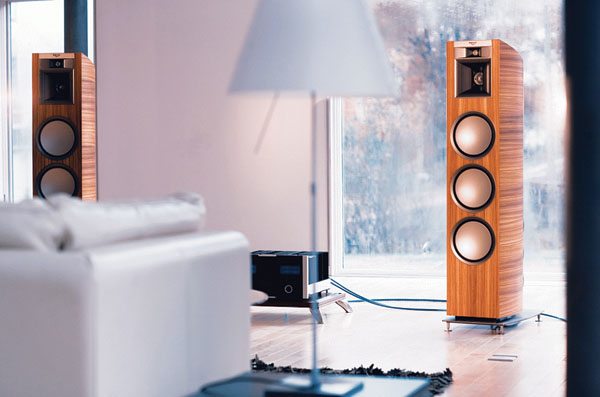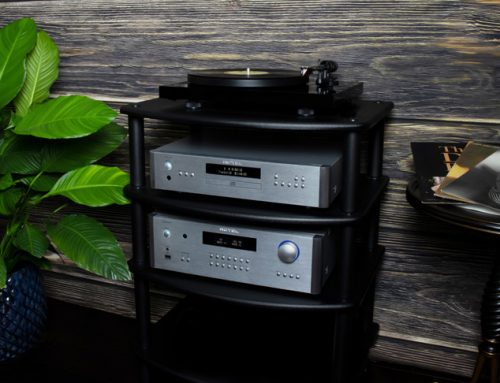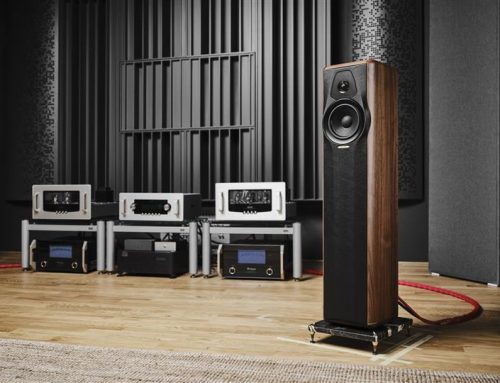Did you know that your audio system can affect the kind of music you listen to? As an extreme example, consider the tricked out Honda Civic with massive subwoofers cruising down the high street. No way would Miles Davis or the Tokyo String Quartet sound good in that environment, never mind the strange looks you’d get from the people you’re out to impress.
You play to your strengths. You’ve got massive deep bass – well hip hop just thrives in that environment. Single ended triode amps? These so called flea-powered amps will fall flat under the load of heavy rock or a full symphony orchestra. It’s a vicious circle. You buy the big subwoofers because you like hip hop, then you find your system isn’t much good for anything else so you stay in that groove. It can also be a virtuous circle if you play your cards right.
If you want to expand your musical horizons, you’re going to need equipment that serves a wide variety of music well. And when you have that system, you’ll be able to enjoy the head banger stuff and modern jazz, Mahler and Keb’ Mo’, Amy Winehouse and Leonard Cohen. It may cost you an arm and a leg, but you wouldn’t be reading this magazine if you were happy with what you’ve got now, would you?
How do you choose the music you listen to? Does the music really speak to you or does it just impress your friends? Have you really tried every kind of music out there and made rational choices based on that extensive experience or are there entire musical genres you never mess with – salsa, opera, reggae, funk, techno, Motown, folk? There’s amazing music to be had in every area, but if you’ve set up your HiFi to favour one particular style, you won’t enjoy some other styles and you’ll be missing out.
I’ve been in this business for a long time, contributing articles to a variety of HiFi magazines and blogs. I’m a gear-head for sure, but music is my first love. I grew up on a parentally enforced diet of classical music (Monday to Friday) and traditional jazz (weekends), but cheated by listening to pirate radio (Radio Luxemburg) on a transistor radio out of earshot of my parents. In fact I installed a bell push on that radio so the music would cut out when I fell asleep at night. Despite looking like a geek to all my friends, who thought classical music was for blue-rinse old ladies, I lapped up the best that London’s Royal Festival Hall or my local music library had to offer, while borrowing and taping my friends’ Led Zeppelin and King Crimson albums, falling under the spell of Dylan, Donovan, Nina Simone, The Stones, The Who and The Kinks. I’ve reviewed classical, pop, klezmer, jazz, folk and world music and nothing excites me more than discovering a new type of music where the invention is high and execution superb. OK so I’m not into Polka, electronic or country but that still leaves quite a lot for me to discover. Along the way, my stereo has been on an upward path where you could easily plot against time not just bandwidth extension and flatness, but lower distortion levels, improvements to imaging and dynamics. I’ve also experienced a startling expansion of the range and quality of live music in Toronto.
During this time there have been many aha moments, where a window has opened onto the music which I never want to close. The Linn Sondek LP12 was a revelation as to just how good a gramophone could sound, so much better than the direct drive offerings from Japan. I bought mine in 1980 and it’s still performing superbly today, in fact much better, thanks to a steady stream of updates. The introduction of digital, sadly, was not one of those happy moments, although today’s hi-rez bears little relation to the early cold, clinical, even sterile offerings we were assured had “perfect sound forever”. The Meridian M2 active speaker was a genuine game changer, a speaker so good I held onto it well past its “sell-by” date because it put most other speakers to shame. Ditto the Wilson Benesch Act 1, not just world class sound but looks to die for. The YBA Integré DT amp also marked a great leap forward – a true glimpse of the real high end at a somewhat affordable price. More recently, the XDS1 SACD player from EMM Labs finally showed me what digital sound can be, mightily expensive but still less than half the price of several inferior rivals.
When one of these breakthrough products appears, you find there’s more on your recordings than you ever knew. It’s not that you suddenly hear details that weren’t there before. Go back and listen to the previous component and you’ll probably hear that new detail. What has changed is the ease with which your brain absorbs the richness and subtlety of the music, the spaciousness and pin point precision of the image, the improvements in dynamic range that remind you of the live music experience.
How do I know when I’m listening to a great component? First of all you can’t hear just how good that EMM Labs CD player is unless the rest of the system is performing at a similar level. In fact your system is only as strong as its weakest link, so a reviewer like me has to have top notch (reference quality) components end to end. Then you can judge a particular component by switching it in and out of the system and comparing it with another component you are familiar with. When I listen, I’m not looking at how deep the bass goes, or how sharp the transients or any of those aspects of sound that I must eventually describe in my review. I’m just hoping to be captivated by the music I’m listening to. I want to be overcome with emotion, connected to the performing artists and unwilling to press pause. If I find my feet tapping, or I start singing along or I want to get up and dance or air conduct, that’s the sign I’m looking for. The details come later.
A lot of people say to me that good equipment would be wasted on them because their ears aren’t critical enough to really hear much difference between two amplifiers or two pairs of speakers or so on. They may even laugh at the suggestion that substituting one power cord for another can make any significant difference. But I will tell you categorically, my ears are no more special than yours, and if I can hear the difference, so can you. I’ve never had anyone actually sit down with me and fail to appreciate the major differences I do, so I think those people are selling themselves short. Certainly some people will enjoy a type of sound that I don’t – listening is pretty subjective, but certain aspects will have all listeners appreciating lower distortion, improved imaging, higher dynamic range and so on. Even among professional reviewers there are some I generally agree with, one in particular I always seem to agree with (or perhaps he always agrees with me), and some that make we want to pull my hair out (while I still have some).
Let me break it down and explain some of the key qualities that a good quality HiFi system should offer while listening to music.
Editor’s note: each term below is followed by an example of an album and/or specific song compiled by Phil Gold, Neil Underwood and Suave Kajko.
Wide Bandwidth
The ability of a system to reproduce all the notes of the musical spectrum with equal delight. No small speaker can give you this – they will all roll off in the lower frequencies. Diana Krall’s All For You should do the trick. Also try just about any track from the Dire Straits Brothers In Arms album. This album nicely captures a wide musical spectrum ranging from soft cymbal strikes to deep, tuneful bass notes and everything in between.
Soundstage
You’re looking for a three dimensional image where each performer is clearly located in space – there should be depth (one in front of another), width (strung out across a stage) and height (very difficult to achieve – only the very best equipment can portray height). Most of all, the image should be stable and consistent as you move around the room. You won’t find this in early stereo recordings or in anything compressed to MP3. Try the Ray Charles album Genius Loves Company. Another disc with a great soundstage is the Alanis Morissette Jagged Little Pill Acoustic album. The track “You Oughta Know” should very easily allow you to pin point the locations of the vocals and the instruments – the vocals are slightly raised to the right of the soundstage, the acoustic guitar is elevated slightly and positioned on the left, while the drums are clearly located behind the vocals. This entire album has a natural three-dimensionality, with a good portrayal of width, depth and height. Most Radiohead albums also offer a great sense of mesmerizing three-dimensionality, although you should realize that Radiohead song soundstages are engineered rather than the real-life soundstage that’s on the Alanis Morisette disc.
Air
By this we mean extension at the top end of the frequency band. Commonly speakers will roll off (or cut off) in the high treble and you will experience this as a lack of sparkle, particularly noticeable as a tizzy sound on cymbals or a very dry sound in percussion and wind instruments like the flute. Voices in particular really open up on a system with air. Try Joni Mitchell’s Blue, Amy Winehouse’s Rehab or the Alanis Morissette album mentioned above. If you’re into new rock, you should also try City and Colour’s Little Hell album. “The Grand Optimist” track contains two voices that are perfectly blended together yet each one is very clearly within its own space. There is plenty of air between all of the instruments, which creates a clear distinction and space between the guitar and drum elements.
Accurate Tone
You want to be able to tell if the guitar is a Fender Stratocaster or a Gibson Les Paul, or if that violin is an Amati or a Stradivarius. It’s all about the harmonics that resonate above the actual note that is played and you need a very fine tweeter to do the job. If it’s a voice it should be like the singer is standing in front of you – clear, rich and reflective of their talking voice, not a shrill, artificial voice singing words you can barely make out. Try First We Take Manhatten or anything else by Jennifer Warnes. Cat Stevens’ Tea For the Tillerman album also has some great tracks to test this. Play “Sad Lisa” and listen for an accurate piano tone as well as clear and rich vocals. Also pay attention to natural tones of the string arrangement at the back of the soundstage, as the bows are drawn across the strings. The vocals should maintain clarity even as other instruments play their respectable parts.
Resolution
The higher the resolution, the more detail you can hear, for sure, but also the easier it is for the mind to recognize the sound. Just like a very low resolution picture may make it hard to see a small detail like the time on a watch, so it is with sound. The problems are amplified when there are many simultaneous voices or instruments. Low resolution makes the singers in a choir blend into one, while high resolution lets you hear each voice individually among all the others. Try the Beach Boys classic Good Vibrations. Radiohead’s Kid A starts with a track named “Everything In Its Right Place” and sets the right tone for the entire album. This track contains multiple voices, instruments and various sound effects which blend perfectly as a whole, yet each individual component can be easily distinguished. AIR French Band Moon Safari is another great album which contains plenty of musical details.
Dynamic Range
This is something you’ll pay a lot of money to get right. All loudspeakers compress, as do all amplifiers but to a lesser extent. You’re looking for something that maintains the same distance between the quietest parts of a song and the loudest – Pinball Wizard will be as good a test as any sort of Mahler’s Resurrection Symphony. “Since I’ve Been Loving You” from Zepplin’s III album is another good song to test dynamic range. This song starts with a soft guitar lick, supported by the louder thump of drums, and slowly builds in intensity and dynamics. The vocals and guitars fluctuate greatly in dynamic range throughout this track.
Speed
An accurate system gets the timing right, especially noticeable in sharp transient, drum thwacks for example. But it takes time to accelerate a mechanical object such as a speaker cone up to speed, resulting in blurred edges and a noticeable reduction in impact. Try Bartok’s Concerto for Orchestra or Keb’ Mo’s Am I Wrong? Another good track to test speed is “Overture” on The Who’s Tommy album.
Presence
A bit hard to define but you know it when you hear it. It’s a forward thrust to the music that draws the listener in, making it impossible to treat as background music. It applies equally to just about any genre of music. When played on a quality audio system, Adele’s “Someone Like You” from the album 21 should give you the perception that she is right in front of you singing and playing piano. Pay attention to the nuances in her voice and the natural tones of the piano keys. If the hairs on the back of your neck stand up then you know your system is getting it right.
Transparency
A hallmark of the very best HiFi is the clarity that certain highly accurate and high resolution equipment can bring. Like presence it can apply to any music. It’s true to the mantra “do no evil”, adding nothing of its own to the signal. There’s plenty of stuff out there that has its own house sound, which may be attractive in itself but is really a form of distortion. Think warmth, an excess of harmonic richness you sometimes get with tubed equipment. Try Johnny Cash’s American IV album – listen to the subtleties of his iconic vocals and the richness of guitar strings as well as the strumming as the pick hits the strings. A transparent system should extract the finest details in his voice and produce an emotion filled performance.
The big payoff
The reward for your hard earned cash and perseverance in putting together a system that scores well on all these characteristics is the sheer delight in the beauty and realism of the best recordings. In every genre there are insanely great recordings which will just transport you, have you stomping your feet and swaying your hips in time to the music. Jazz fans should pull out Miles Davis’ Kind of Blue. Classical music lovers will revel in the sound world of the Kodaly String Quartet playing Haydn. Everyone can rejoice in the Beatles startling Love album and so on. But all recordings will reveal far more musical value than you might have imagined and you’ll be open to a much wider variety of music than ever before when you can hear them each at their best. Ultimately, it’s not about the equipment, it’s about your musical enjoyment, and music enriches our lives to no end.
14 Comments
Leave A Comment
You must be logged in to post a comment.







… [Trackback]
[…] Here you can find 90314 more Info to that Topic: novo.press/the-art-of-listening-how-do-you-connect-with-music-plus-key-qualities-you-should-look-for-in-an-audio-system/ […]
… [Trackback]
[…] Information on that Topic: novo.press/the-art-of-listening-how-do-you-connect-with-music-plus-key-qualities-you-should-look-for-in-an-audio-system/ […]
… [Trackback]
[…] Find More Info here to that Topic: novo.press/the-art-of-listening-how-do-you-connect-with-music-plus-key-qualities-you-should-look-for-in-an-audio-system/ […]
… [Trackback]
[…] Info to that Topic: novo.press/the-art-of-listening-how-do-you-connect-with-music-plus-key-qualities-you-should-look-for-in-an-audio-system/ […]
… [Trackback]
[…] Here you will find 71511 additional Information on that Topic: novo.press/the-art-of-listening-how-do-you-connect-with-music-plus-key-qualities-you-should-look-for-in-an-audio-system/ […]
… [Trackback]
[…] Here you will find 88013 additional Information to that Topic: novo.press/the-art-of-listening-how-do-you-connect-with-music-plus-key-qualities-you-should-look-for-in-an-audio-system/ […]
… [Trackback]
[…] Info on that Topic: novo.press/the-art-of-listening-how-do-you-connect-with-music-plus-key-qualities-you-should-look-for-in-an-audio-system/ […]
… [Trackback]
[…] Here you will find 41290 more Information on that Topic: novo.press/the-art-of-listening-how-do-you-connect-with-music-plus-key-qualities-you-should-look-for-in-an-audio-system/ […]
… [Trackback]
[…] Here you will find 530 more Info to that Topic: novo.press/the-art-of-listening-how-do-you-connect-with-music-plus-key-qualities-you-should-look-for-in-an-audio-system/ […]
… [Trackback]
[…] Find More Information here on that Topic: novo.press/the-art-of-listening-how-do-you-connect-with-music-plus-key-qualities-you-should-look-for-in-an-audio-system/ […]
… [Trackback]
[…] Read More on that Topic: novo.press/the-art-of-listening-how-do-you-connect-with-music-plus-key-qualities-you-should-look-for-in-an-audio-system/ […]
… [Trackback]
[…] Read More on on that Topic: novo.press/the-art-of-listening-how-do-you-connect-with-music-plus-key-qualities-you-should-look-for-in-an-audio-system/ […]
… [Trackback]
[…] Read More to that Topic: novo.press/the-art-of-listening-how-do-you-connect-with-music-plus-key-qualities-you-should-look-for-in-an-audio-system/ […]
… [Trackback]
[…] Find More Info here on that Topic: novo.press/the-art-of-listening-how-do-you-connect-with-music-plus-key-qualities-you-should-look-for-in-an-audio-system/ […]